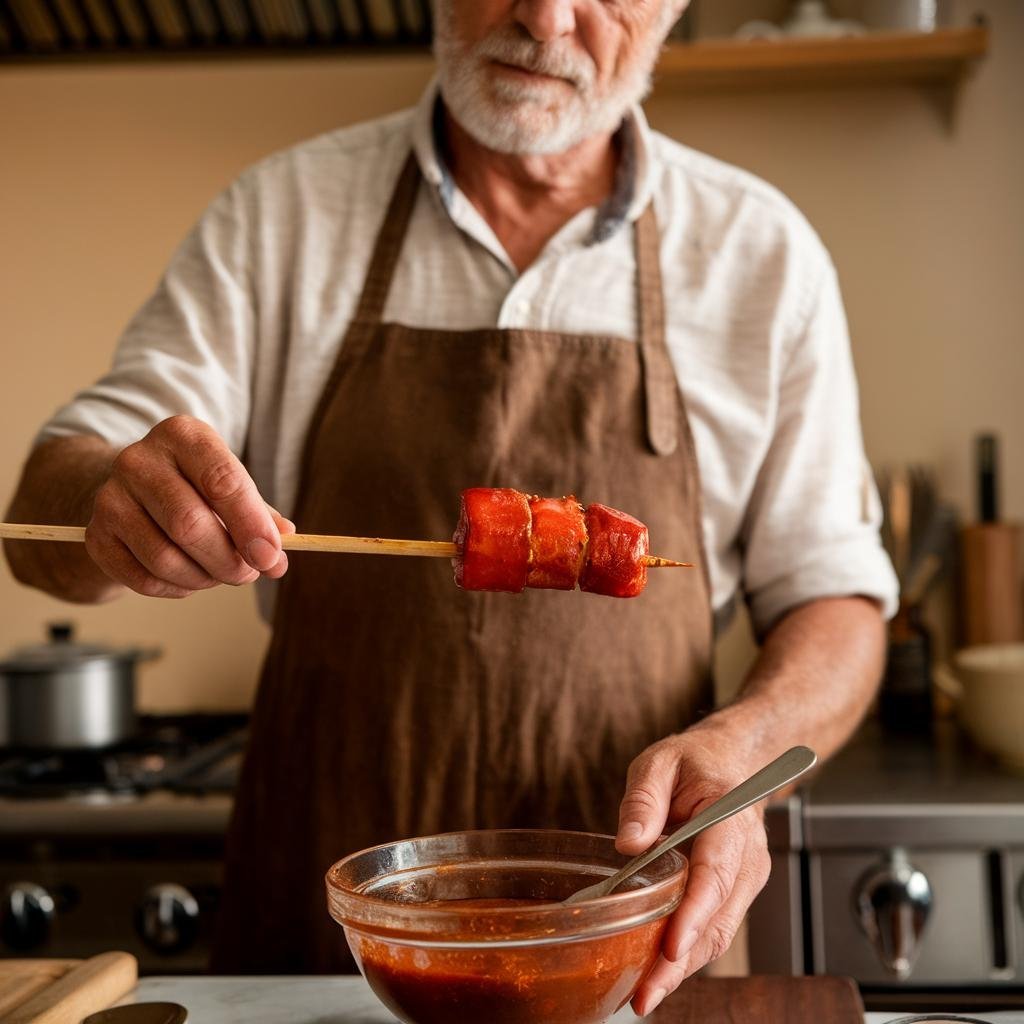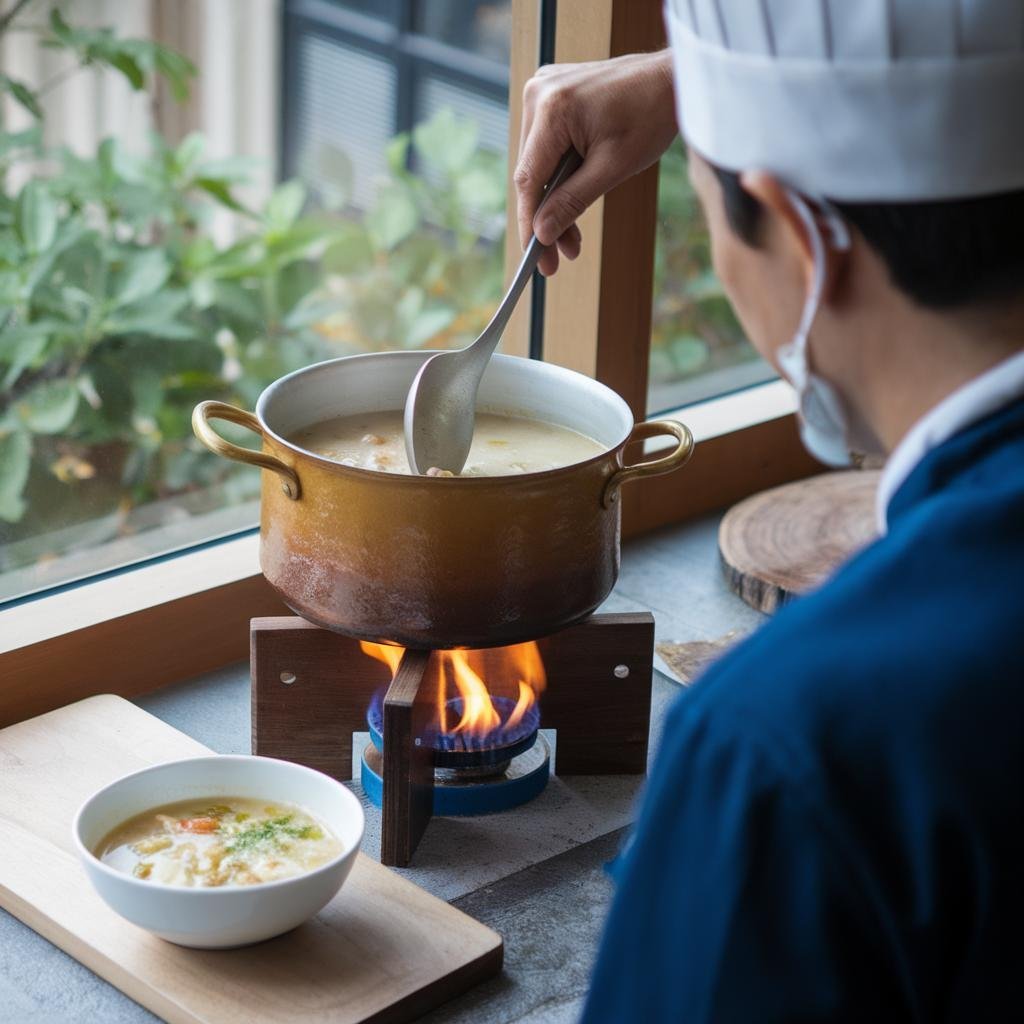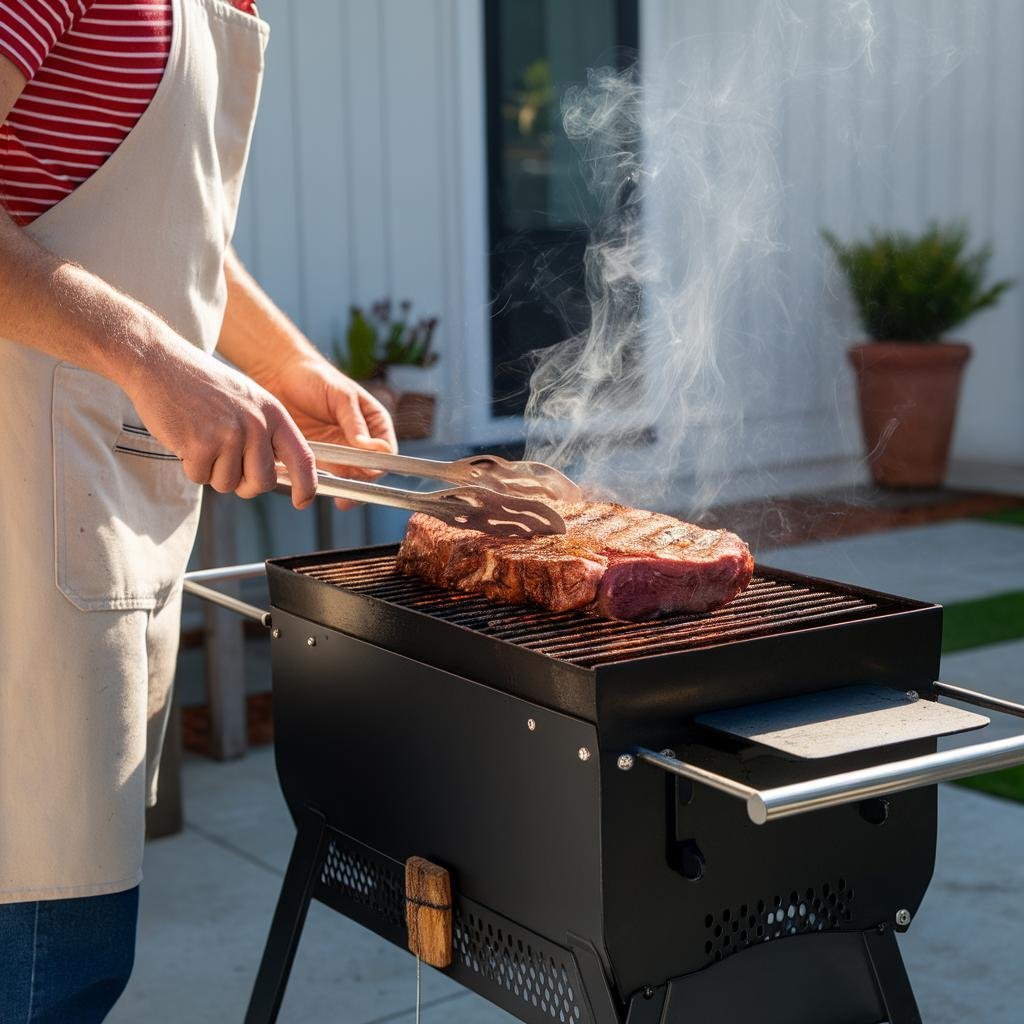Disclosure: This Post Contains Affiliate Links; We earn a commission on purchases.
Are you looking to elevate the flavor and tenderness of your meat to new heights? Look no further than the art of brining. Brining is a simple yet powerful technique that can transform your meats, resulting in juicy, tender, and incredibly flavorful dishes.
So, what exactly is brining? Brining is the process of soaking meat in a saltwater solution, allowing it to absorb moisture and flavor. This technique works wonders for lean and mildly flavored meats such as turkey, chicken, veal, and pork. By changing the cellular structure of the meat, brining creates pockets that trap moisture, resulting in meat that is moist, tender, and bursting with flavor.
To brine meat effectively, there are a few key things to keep in mind. First, choose a non-reactive vessel that can fully submerge the meat in the brine. This ensures even seasoning and maximum flavor infusion. Next, it’s important to find the right salt-to-water ratio. A general rule of thumb is to use ¼ cup of kosher salt and ¼ cup of sugar for every quart of water. Finally, brining time can vary, but as a guideline, plan for about an hour per pound of meat.
Whether you’re a seasoned chef or a cooking novice, learning how to brine meat is a game-changer. In this article, we’ll delve into the science behind brining, explore different brining techniques, and provide you with a basic brining recipe to get you started on your flavor-packed journey.
Key Takeaways:
- Brining enhances the flavor and tenderness of meat by changing its cellular structure.
- Lean and mildly flavored meats like turkey, chicken, veal, and pork are ideal candidates for brining.
- A non-reactive vessel is necessary to fully submerge the meat in the brine.
- The salt-to-water ratio is crucial in creating a balanced brine.
- Brining time varies depending on the size of the meat, with about an hour per pound recommended.
The Science Behind Brining
Brining is not just a simple process of soaking meat in a saltwater solution. It is a fascinating scientific technique that involves altering the meat’s cellular structure to enhance its flavor, tenderness, and moisture retention.
When meat is placed in a brine solution, the magic begins. The salty brine solution is absorbed by the meat through a process called osmosis. Osmosis occurs when the meat’s cells, which have a higher salt concentration than the surrounding brine, attract water molecules from the brine. As a result, the meat becomes infused with the flavors of the brine.
But it doesn’t stop there. The salt in the brine also reacts with the proteins in the meat, creating moisture-trapping pockets. These pockets help retain moisture during cooking and prevent the meat from drying out, resulting in juicy and succulent meat.
Additionally, brining allows for the infusion of additional flavors into the meat. Aromatics such as herbs, spices, garlic, and citrus can be added to the brine solution, further enhancing the taste and aroma of the meat.
Overall, the benefits of brining are undeniable. It not only improves the flavor of the meat but also tenderizes it, making even the toughest cuts deliciously tender. The moisture retention provided by brining ensures that the meat remains juicy and succulent, even after cooking.
So, the next time you’re preparing poultry, pork, or other lean meats, consider harnessing the power of brining to unlock their full potential. Your taste buds will thank you!
Benefits of Brining
| Benefits | Description |
|---|---|
| Juiciness | Brining helps meat retain moisture, resulting in juicy and succulent texture. |
| Flavor Enhancement | The infusion of flavors through the brine solution adds depth and complexity to the meat. |
| Tenderness | The salt in the brine reacts with proteins, making even tough cuts tender. |
| Moisture Retention | Brining prevents the meat from drying out during cooking, keeping it moist and delicious. |
| Customization | Aromatics and seasonings can be added to the brine to create unique flavor profiles. |
Choosing the Right Meat for Brining
Not all meats benefit from brining. Lean, mildly flavored meats that are typically cooked to a high internal temperature, such as turkey, chicken, veal, and pork, are ideal candidates for brining. These meats tend to be less moist and can benefit from the additional moisture retention and flavor enhancement that brining provides. On the other hand, naturally full-flavored and rich meats like beef, lamb, venison, and bison have a strong flavor profile that should be allowed to shine on their own, without the need for brining.
When it comes to brined foods, it’s important to consider the characteristics of the meat to determine if brining is necessary. Lean meats, with their milder flavor, have a tendency to dry out during cooking, making them excellent candidates for brining. By infusing them with a flavorful brine, these meats become juicier and more succulent, resulting in a truly satisfying dining experience.
Benefits of Brining Lean Meats
- Moisture retention: Brining helps lean meats retain moisture, preventing them from drying out during cooking.
- Flavor enhancement: The brine solution adds depth and complexity to the meat’s flavor, making it more enjoyable to eat.
- Tenderness improvement: Brining alters the cellular structure of the meat, resulting in a more tender texture.
On the other hand, naturally flavorful and rich meats already have a robust taste that doesn’t require the additional flavor infusion of brining. These meats, when properly cooked and seasoned, can stand on their own, allowing their inherent flavors to take center stage. So, while brining can work wonders for lean meats, it’s best to let the natural flavors of beef, lamb, venison, and bison shine without the intervention of brining.
Next, we will explore the different methods of brining and the advantages they offer in enhancing the taste and texture of meat.
Wet Brining vs. Dry Brining
When it comes to brining meat, there are two main methods to choose from: wet brining and dry brining. Both techniques have their own advantages and are used to achieve tender and flavorful results. Let’s explore the differences between these two brining methods to help you determine which is the best option for your needs.
Wet Brining
Wet brining involves soaking the meat in a solution of salt, water, and sometimes other flavorings. The meat is fully submerged in the brine mixture, allowing it to absorb the flavors and the moisture from the liquid. This method is great for larger cuts of meat, such as whole turkeys or roasts, as it ensures even seasoning throughout the meat.
One of the benefits of wet brining is that it helps to tenderize the meat by breaking down its proteins and enhancing moisture retention. The salt in the brine solution helps to draw moisture into the meat, resulting in juicier and more flavorful dishes. The additional flavorings, such as herbs, spices, and aromatics, can also infuse the meat with delicious flavors.
However, wet brining requires a large vessel that can accommodate the size of the meat and enough liquid to fully submerge it. This can be a challenge for home cooks who may not have access to large containers or refrigerator space. Additionally, wet brining takes longer than dry brining, with the meat often being soaked in the brine solution overnight or even up to 24 hours.
Dry Brining
Dry brining, on the other hand, involves rubbing the meat with a mixture of salt, herbs, and spices. The dry brine mixture is applied directly to the surface of the meat, allowing it to penetrate and season the meat from the outside in. This method is well-suited for smaller cuts of meat, such as steaks, chicken breasts, or pork chops.
One of the advantages of dry brining is that it requires less equipment and space compared to wet brining. You simply need a bowl to mix the salt and seasonings, and a Ziploc bag or a plate to allow the meat to rest in the refrigerator. Dry brining also takes less time than wet brining, with a minimum of one to two hours being sufficient, although longer brining times can intensify the flavors.
Dry brining allows the salt to draw out moisture from the surface of the meat, resulting in a dry and concentrated layer of flavors. This process creates a caramelized and flavorful crust when the meat is cooked, enhancing both the texture and taste. The meat retains its natural juices, resulting in a moist and succulent final dish.
Making the Choice
The choice between wet brining and dry brining ultimately depends on personal preference and the type of meat being brined. Wet brining is ideal for larger cuts that benefit from long brining times and even seasoning throughout the meat. Dry brining is perfect for smaller cuts where convenience and a shorter brining time are desired, while still achieving great flavor and texture.
Experiment with both methods to find your favorite brining technique. Consider the size of the meat, available equipment, and the desired outcome. Regardless of your choice, whether wet or dry, brining is a surefire way to elevate the taste and texture of your meats, ensuring a moist and flavorful dining experience.
Wet Brining: How to Make a Basic Brine
To achieve tender and flavorful meat through wet brining, follow this simple recipe to create a basic brine:
| Ingredients | Instructions |
|---|---|
|
|
By dissolving 1 cup of kosher salt in 1 gallon of water, this brine provides the perfect balance for seasoning the meat. Additionally, you can add smashed garlic cloves, peppercorns, or citrus to infuse extra flavors into the brine. Once the meat is fully submerged in the brine, refrigerate it for the recommended time, allowing the flavors to penetrate. Before cooking, remember to pat the meat dry to achieve that coveted crispy skin and even cooking.
Brining not only enhances the tenderness and flavor of your meat but also allows for endless customization by experimenting with different ingredients. So, why not give wet brining a try for your next culinary masterpiece?
Dry Brining: A Simple Seasoning Option
Dry brining is a straightforward and effective way to season meat without the need for a liquid brine solution. Instead of submerging the meat in a brine, dry brining involves coating the meat with a mixture of kosher salt, herbs, and spices. This dry brine mixture helps to redistribute moisture and infuse flavor into the meat, resulting in delicious and tender results.
To dry brine meat, start by selecting a sturdy Ziploc bag that can comfortably hold the meat. Place the meat in the bag and generously coat it with the dry brine mixture, making sure to cover all sides. The meat should then be tightly sealed in the bag and refrigerated for at least one to two days. This extended refrigeration time allows the dry brine to deeply penetrate the meat, enhancing its flavor and tenderness.
Dry brining is particularly suitable for smaller cuts of meat, such as chicken pieces or pork chops. It can also be used for larger cuts, like whole chickens or roasts, though the refrigeration time may need to be extended. The beauty of dry brining is that it not only adds flavor but also helps create a crispy exterior and a juicy, flavorful interior.
Benefits of Dry Brining:
- Enhances flavor by infusing herbs and spices directly into the meat.
- Redistributes moisture, resulting in a juicier and more tender texture.
- Helps create a crispy exterior and a succulent interior.
- Requires minimal equipment and preparation time.
With dry brining, you can easily elevate the taste and texture of your favorite meats. Whether you’re preparing chicken, pork, or even beef, this simple seasoning option can take your culinary creations to the next level. Give it a try and savor the delicious results!
Tips and Tricks for Brining Meat
When it comes to brining meat, following food safety guidelines is essential, especially for beginners. By ensuring proper brining techniques, you can achieve tender and flavorful results that will impress your family and friends. Here are some useful tips and tricks to enhance your brining process:
- Use a refrigerator: Brining meat should always be done in the refrigerator to prevent the growth of harmful bacteria. This controlled environment ensures food safety and maintains the quality of the meat.
- Submerge the meat fully: It’s important to fully submerge the meat in the brine solution to ensure even seasoning. This allows the brine to penetrate every inch of the meat, resulting in optimal flavor and tenderness.
- Calculate brining time: The brining time should be calculated based on the weight of the meat. As a general guideline, allocate approximately one hour per pound. This ensures that the brine has enough time to work its magic and infuse the meat with flavor.
- Pat the meat dry: Before cooking the brined meat, make sure to pat it dry using a clean paper towel. This removes any excess moisture, resulting in a crispy exterior when cooked.
- Let the meat come to room temperature: Allowing the brined meat to come to room temperature before cooking ensures even cooking throughout. This prevents any cold spots and guarantees a perfectly cooked, juicy piece of meat.
By implementing these tips and tricks, you’ll be well on your way to mastering the art of brining. Enjoy the delectable flavors and tender textures that brining brings to your meat dishes!
| Tip | Description |
|---|---|
| Use a refrigerator | Brining meat should always be done in the refrigerator to prevent the growth of harmful bacteria. This controlled environment ensures food safety and maintains the quality of the meat. |
| Submerge the meat fully | It’s important to fully submerge the meat in the brine solution to ensure even seasoning. This allows the brine to penetrate every inch of the meat, resulting in optimal flavor and tenderness. |
| Calculate brining time | The brining time should be calculated based on the weight of the meat. As a general guideline, allocate approximately one hour per pound. This ensures that the brine has enough time to work its magic and infuse the meat with flavor. |
| Pat the meat dry | Before cooking the brined meat, make sure to pat it dry using a clean paper towel. This removes any excess moisture, resulting in a crispy exterior when cooked. |
| Let the meat come to room temperature | Allowing the brined meat to come to room temperature before cooking ensures even cooking throughout. This prevents any cold spots and guarantees a perfectly cooked, juicy piece of meat. |
Conclusion
Brining is a valuable technique for enhancing the flavor, tenderness, and moisture retention of lean meats. Whether you choose to use a wet brine or a dry brine, the process of brining can transform ordinary cuts of meat into juicy and flavorful culinary delights. By following basic guidelines and experimenting with different flavorings, home cooks can easily master the art of brining and unlock the secrets to tender and mouthwatering results.
Brining is particularly beneficial for lean meats like turkey, chicken, and pork, which tend to be less moist and can benefit from the additional moisture retention and flavor infusion that brining provides. The salty brine solution penetrates the meat, creating moisture-trapping pockets that result in succulent and tender meat with a truly delicious flavor profile.
So, the next time you’re preparing lean meats, consider giving them a brine for a truly unforgettable dining experience. Not only will the brining process enhance the natural flavors of the meat, but it will also ensure that each bite is moist, tender, and bursting with flavor. With brining, you can elevate your cooking and impress your family and guests with perfectly seasoned and deliciously juicy meats.
References

Ryan Conlon is a BBQ enthusiast and inspired chef on a journey through the smoky, savory world of outdoor cooking. Hailing from the heart of the Midwest, Ryan’s passion for grilling ignited during his early years, where family gatherings often revolved around the sizzle of the grill and the aroma of seasoned meats.







